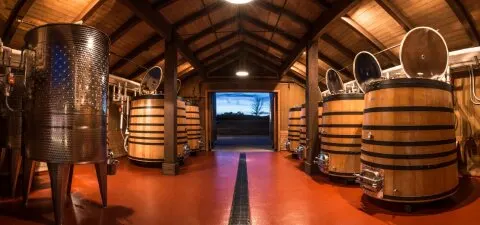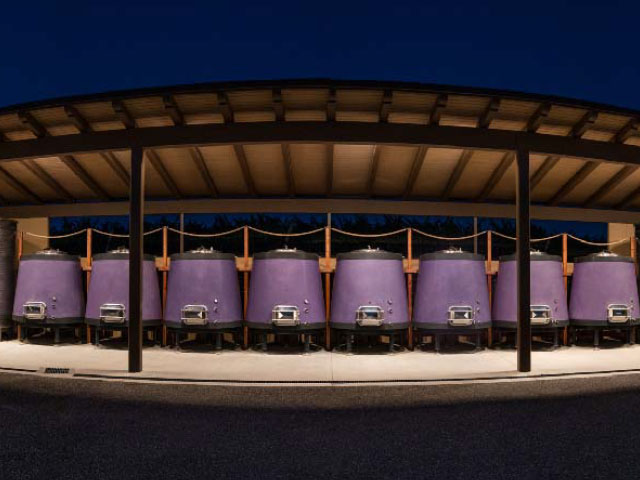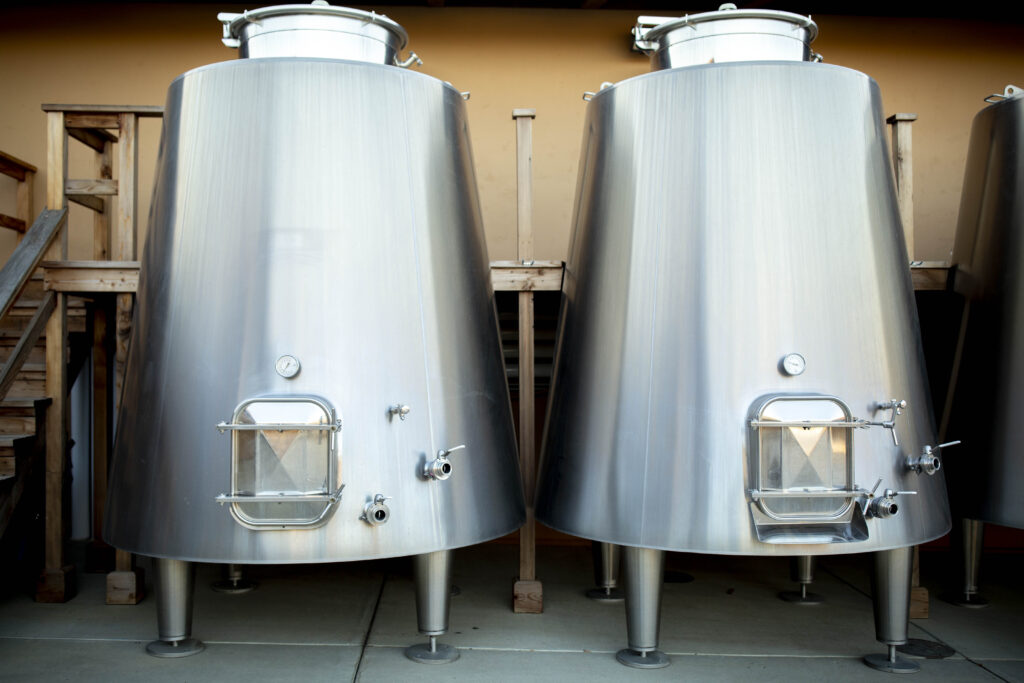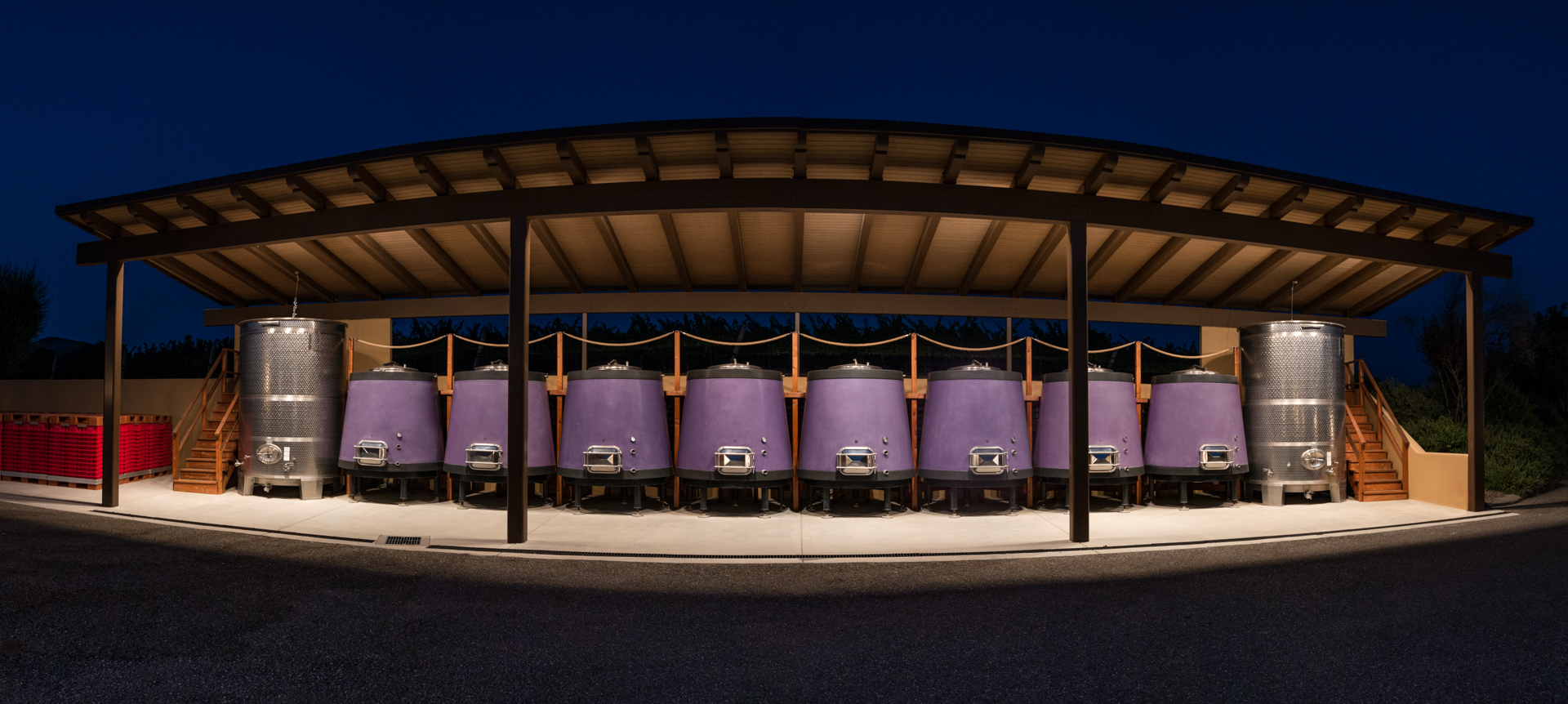Crown Point Cabernet Fermentation Tanks: A Symphony of Precision and Balance
oak tanks: tannin integration with hillside fruit
Oak fermentation tanks are an essential tool in our winemaking process, especially for hillside fruit, which tends to have more intense tannins.
Temperature Stability: Oak provides natural insulation, ensuring steady temperature regulation during fermentation. This gentle, stable environment helps us achieve a balanced extraction of tannins, color, and flavor.
Tannin Integration: Hillside fruit benefits greatly from oak fermentation. The process softens and integrates the naturally firm tannins, resulting in a wine with a velvety texture and refined structure.
Using oak tanks allows us to highlight the power and intensity of our hillside Cabernet while enhancing its elegance and complexity.

concrete tanks: stability and mid-palate intensity
Concrete fermentation tanks bring a unique dimension to our winemaking, particularly in building mid-palate richness.
Thermal Stability: Concrete naturally regulates temperature, providing a steady and even environment for fermentation. This consistency allows us to extract flavors and tannins smoothly, avoiding harshness or imbalance.
Mid-Palate Intensity: Concrete thermal inertia enhances the wine’s texture, contributing a plush, creamy quality that amplifies mid-palate intensity. This helps us create a wine with depth and a polished finish.
By using concrete tanks, we can focus on creating wines with rich texture and a sense of place, letting the natural characteristics of our fruit shine.

stainless steel tanks: versatility and precision
Stainless steel tanks are a cornerstone of our fermentation process, offering unmatched precision and adaptability.
Small Tanks for Block-Specific Fermentation: Our stainless steel tanks, like our oak and concrete vessels, are small enough to handle individual vineyard blocks. This allows us to monitor and control fermentation at a granular level, ensuring each lot achieves its fullest potential.
Ease of Use and Sanitation: Stainless steel is easy to clean and maintain, ensuring a pristine environment for fermentation. This helps us preserve the wine’s purity and prevents any unwanted microbial influence.
Shape and Extraction Control: Stainless steel tanks come in various shapes, allowing us to influence how tannins, color, and flavors are extracted. For example, taller, narrower tanks increase skin-to-juice contact, enhancing extraction.
Neutrality: Like concrete, stainless steel does not impart any flavors, keeping the focus on the fruit’s vibrant characteristics.
Stainless steel fermentation enables us to craft wines with clarity and precision, highlighting the bright, fresh fruit profile of our estate Cabernet.

tailoring fermentation to each block
Our small-lot approach, combined with our diverse range of fermentation vessels, ensures that each block of our vineyard is treated with the care and attention it deserves:
Oak tanks enhance hillside fruit, softening tannins and adding complexity.
Concrete tanks build mid-palate intensity, providing richness and balance.
Stainless steel tanks allow for clean, vibrant fruit expression with precise extraction control.
By fermenting each block in its own tank, we have the flexibility to bring out the unique characteristics of our vineyard, creating wines that are layered, balanced, and reflective of our estate’s diversity.
conclusion: the art and science of fermentation at crown point
At Crown Point, fermentation is where science meets artistry. By using small tanks and selecting the right fermentation vessel : oak, concrete, or stainless steel for each block, we craft wines that express the full potential of our estate Cabernet Sauvignon.
This thoughtful approach allows us to capture the individuality of our vineyard while creating a harmonious final blend. For us, winemaking isn’t just a craft it’s a dedication to excellence, a commitment to our coastal region, ensuring every glass of Crown Point Cabernet tells the story of our land and our passion.

